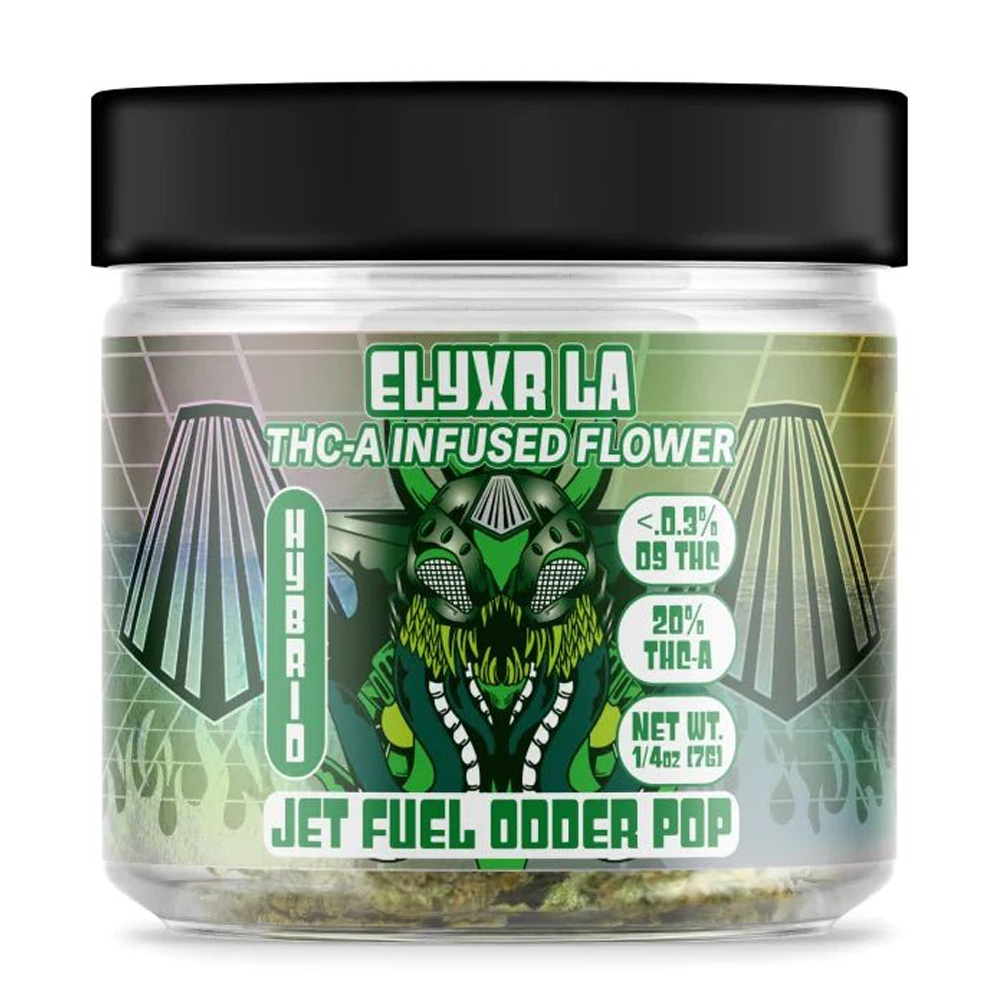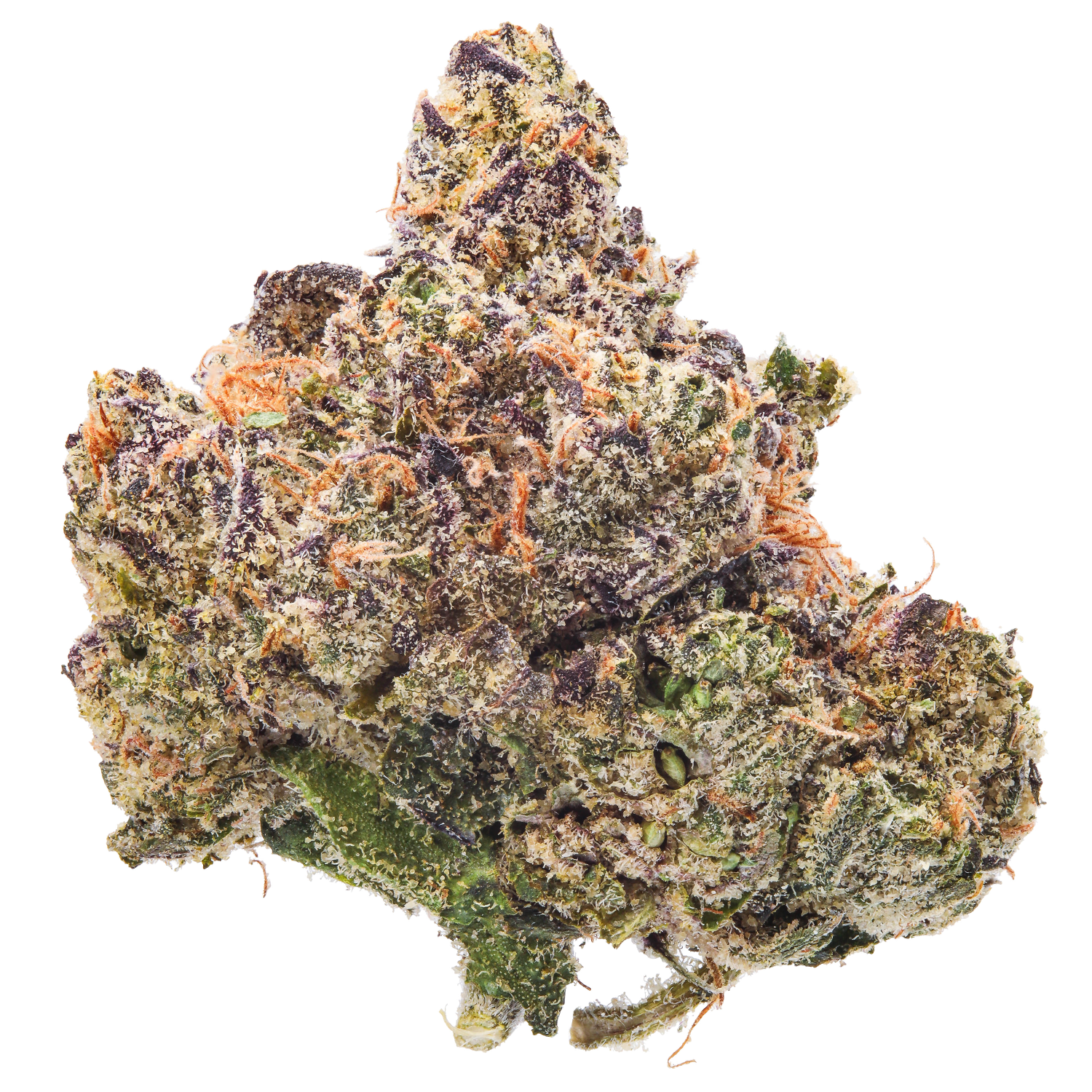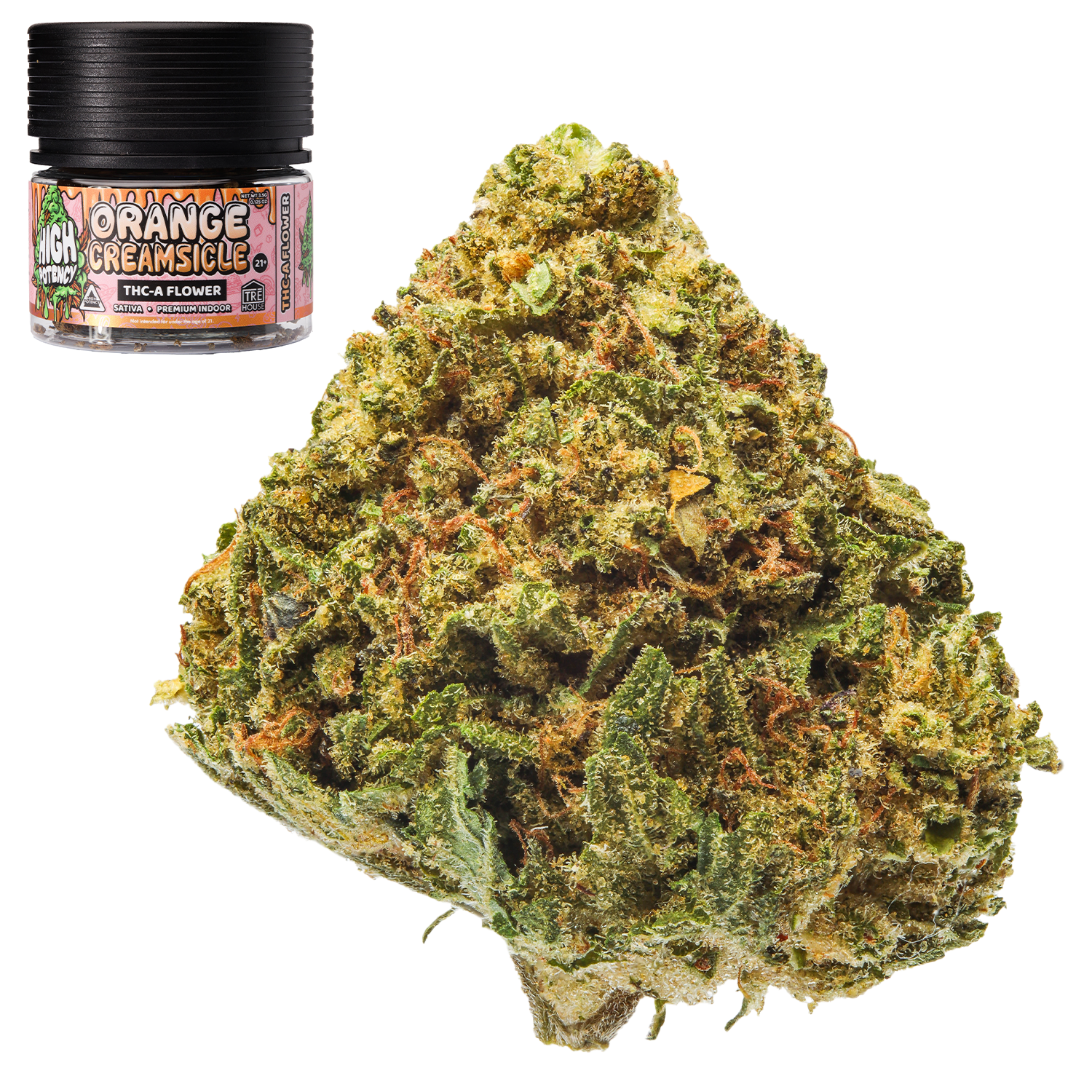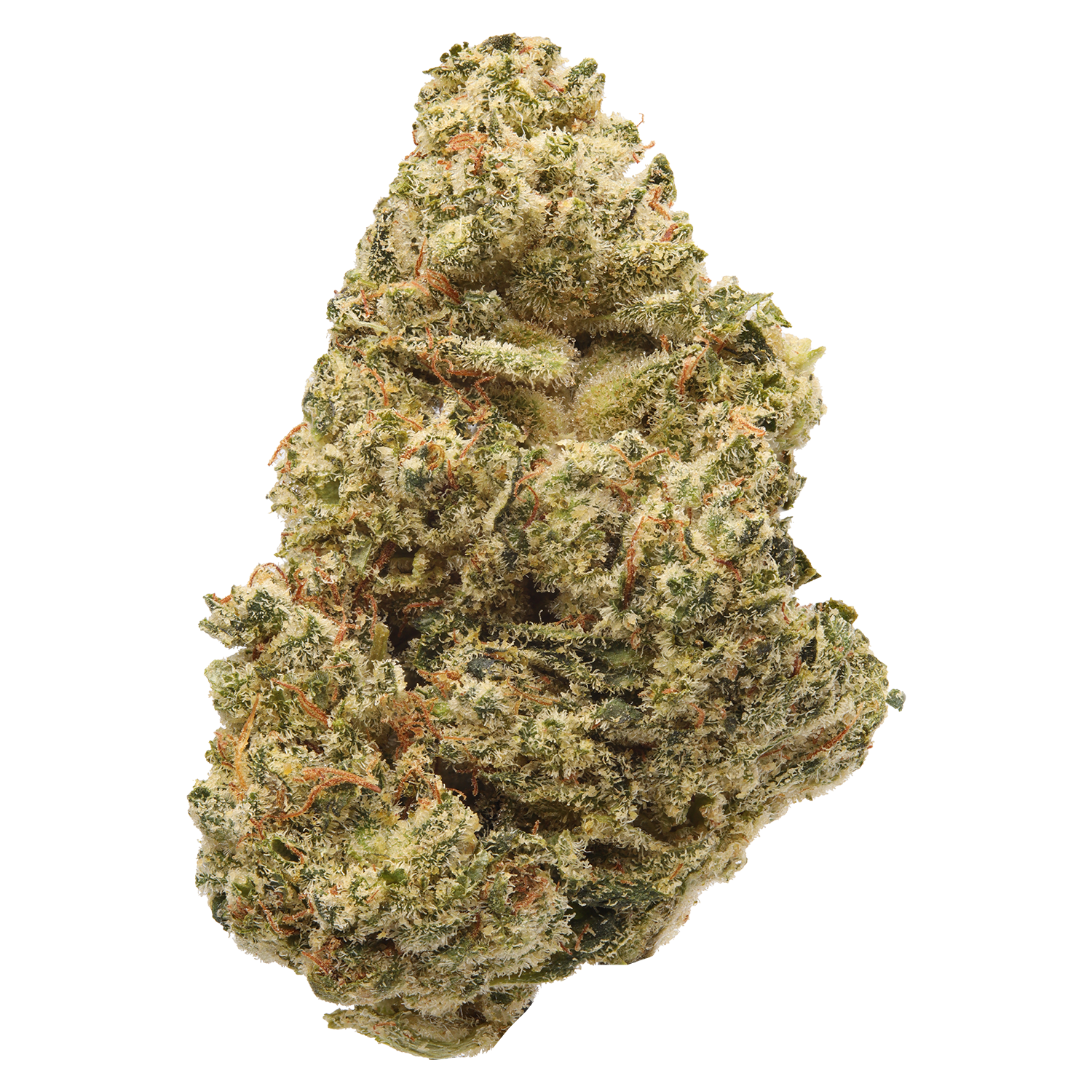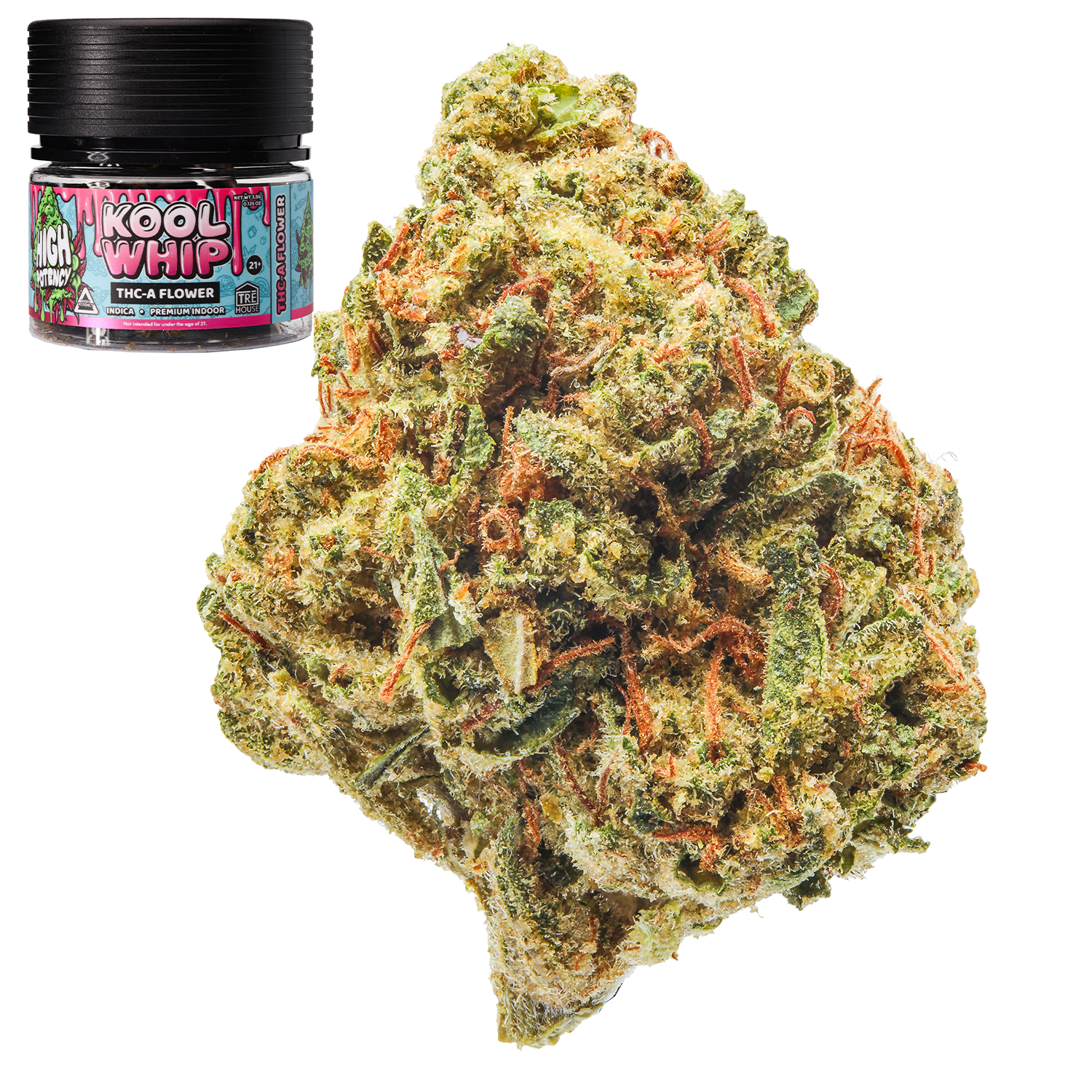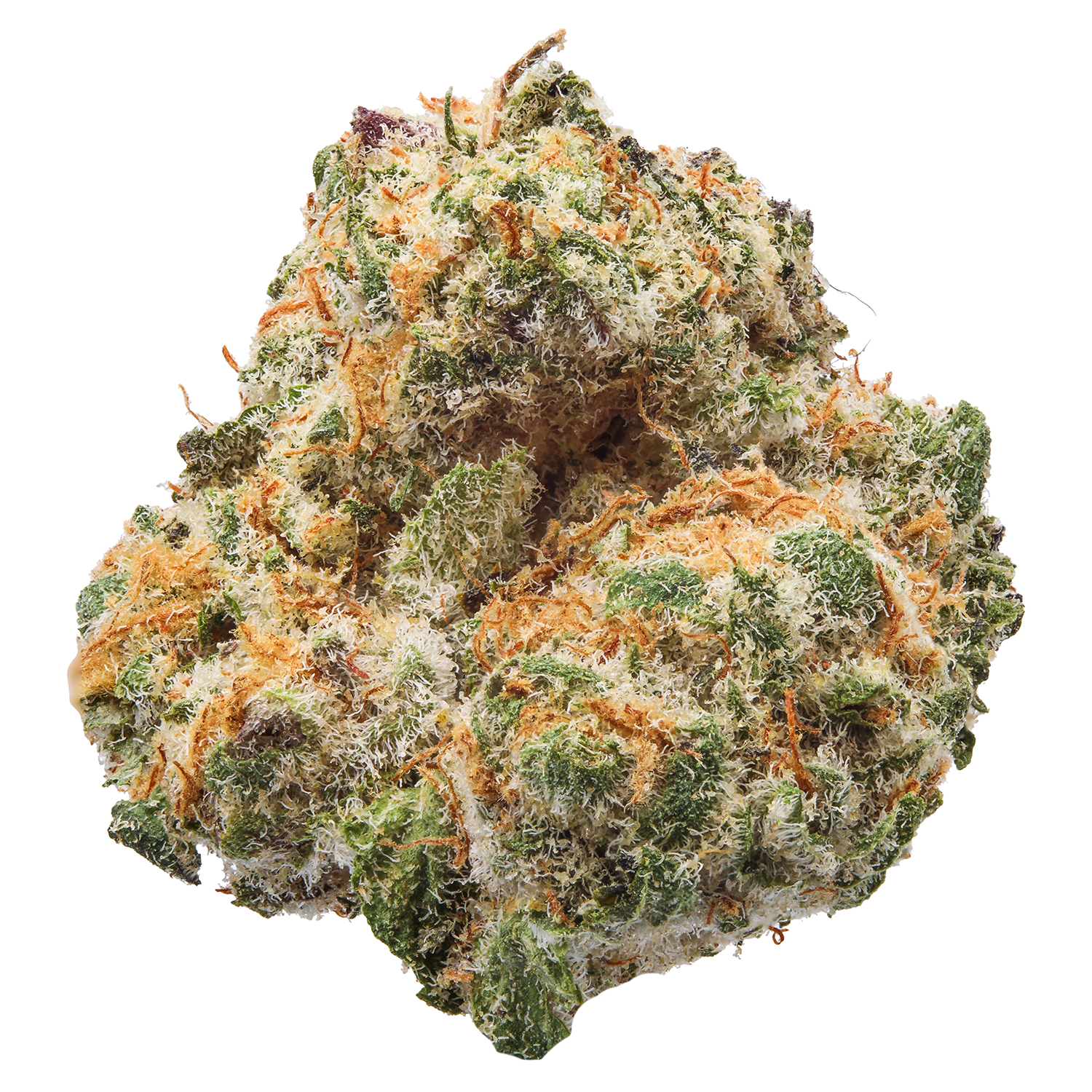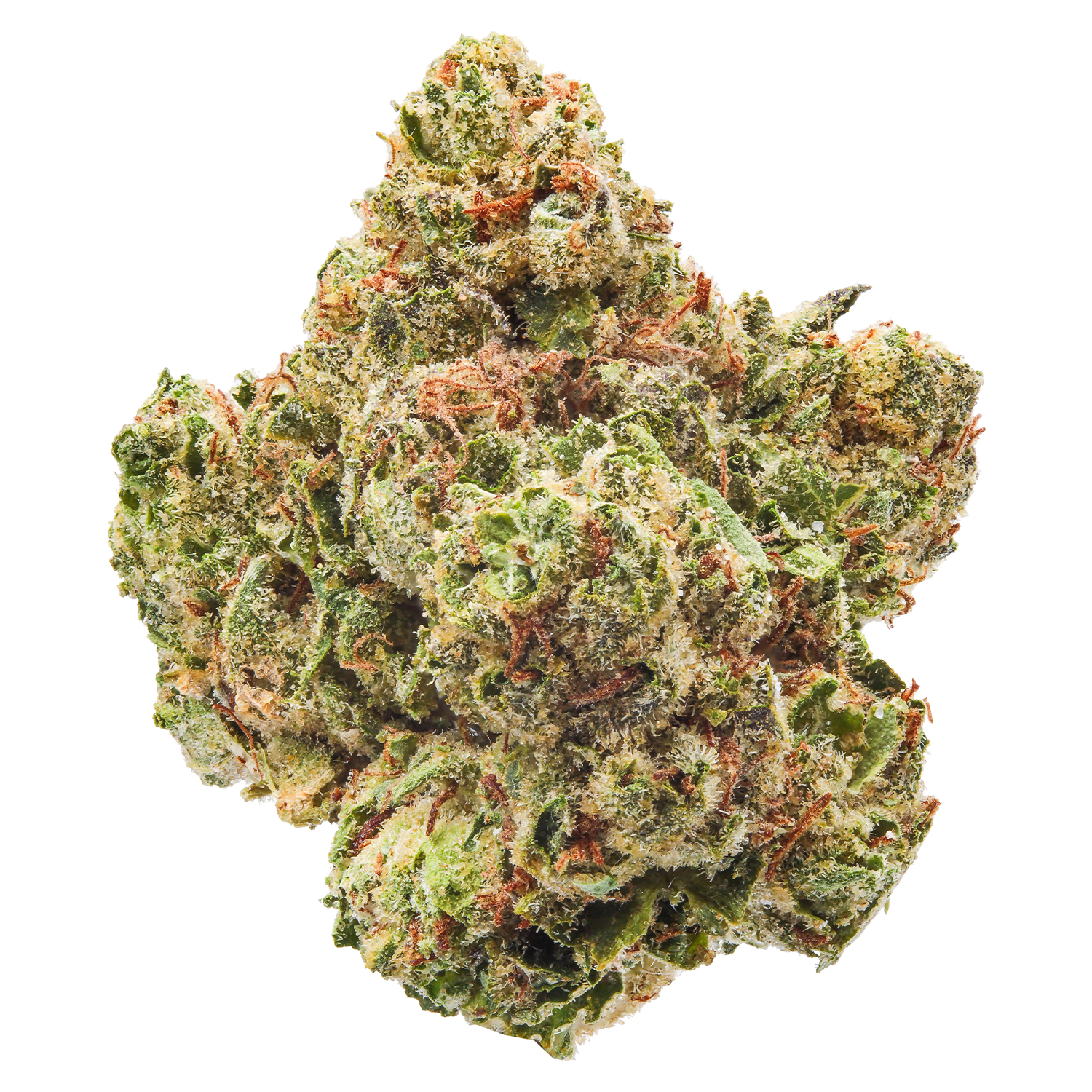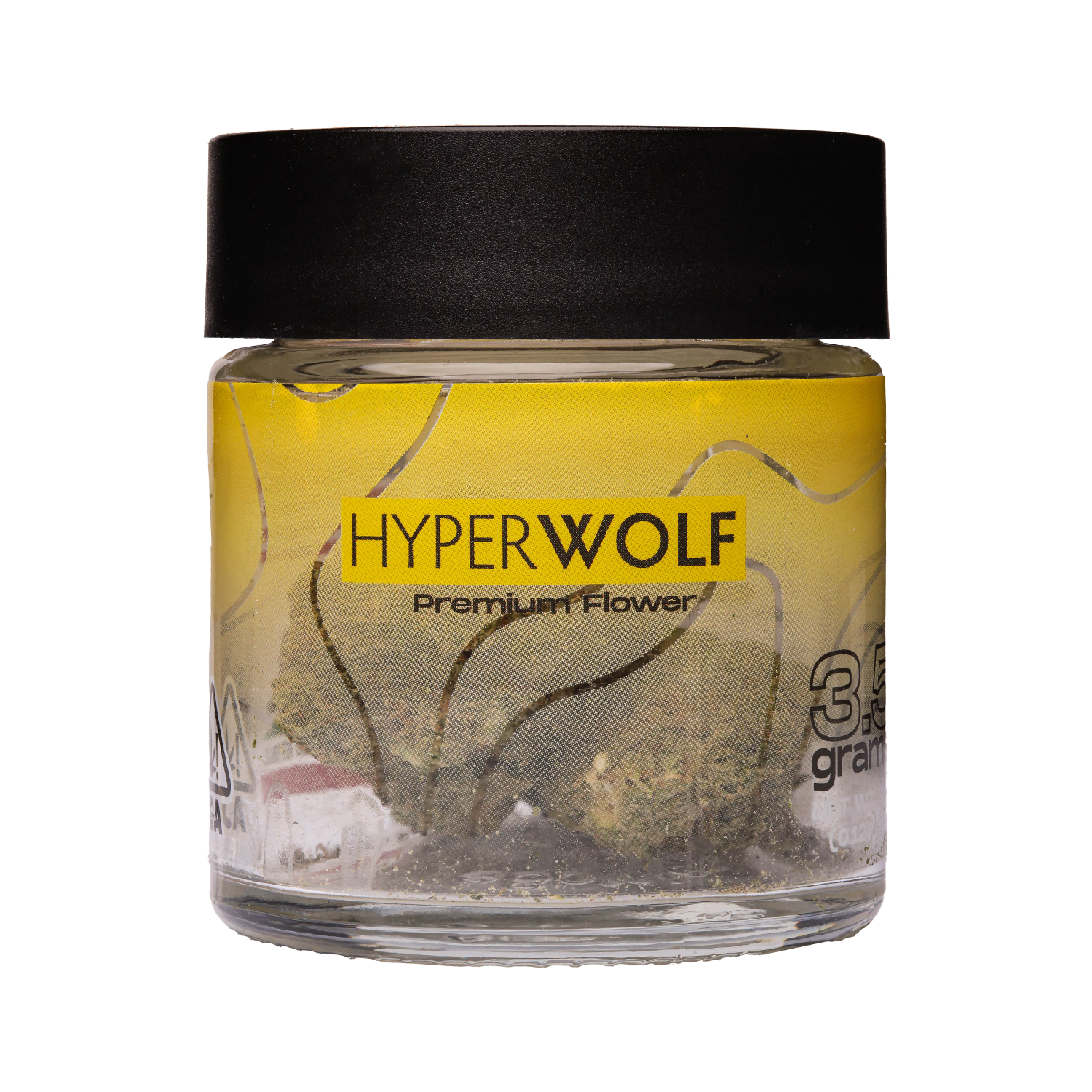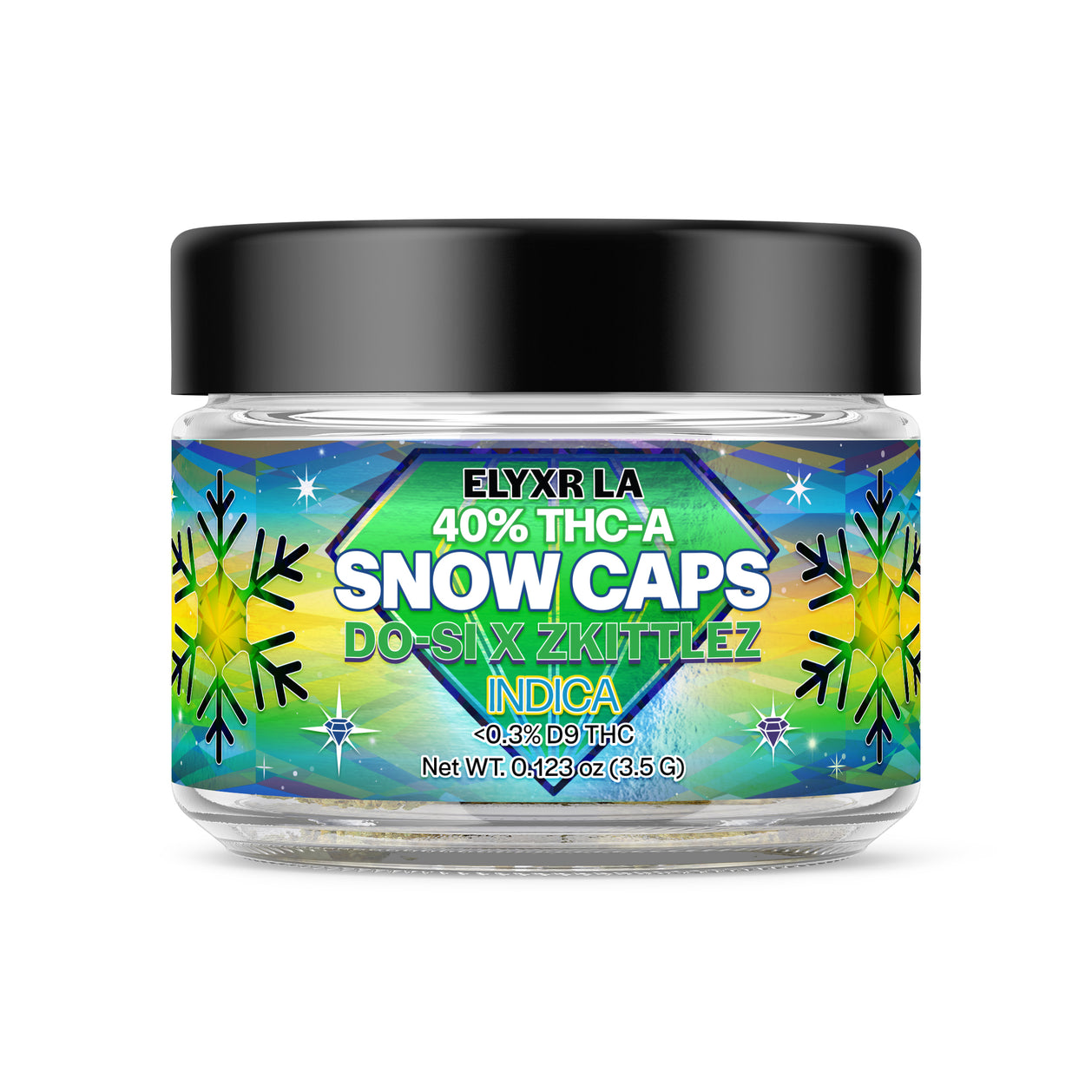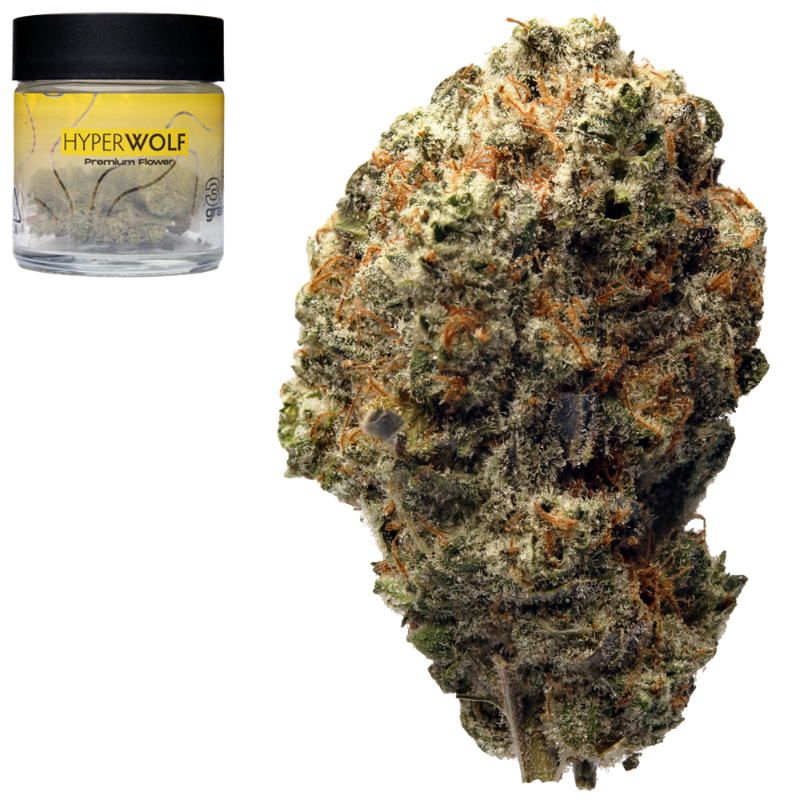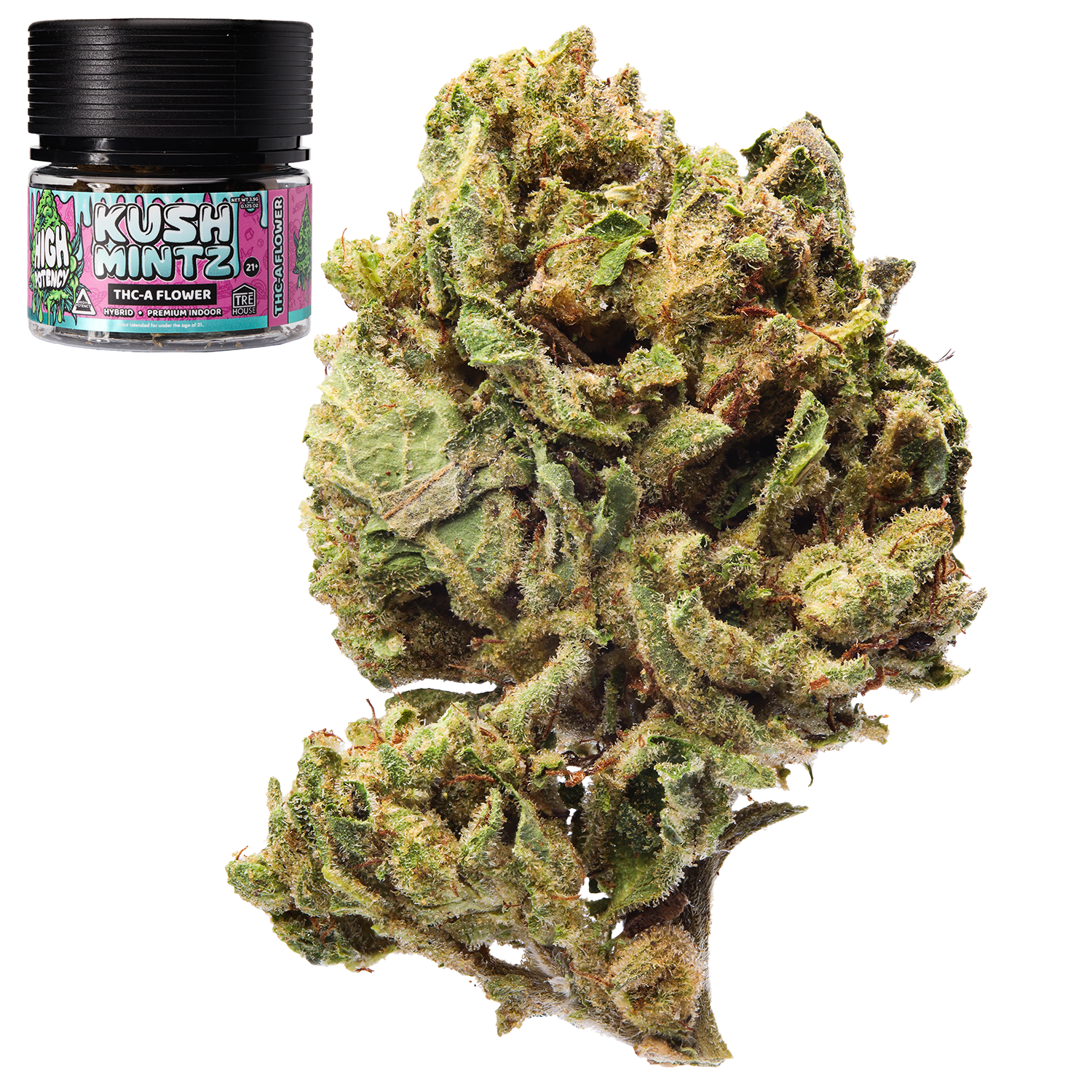If you’ve ever cracked open a jar of cannabis and been hit with a strong lavender-like aroma, you’ve already had a run-in with linalool terpene effects—whether you realized it or not. Linalool is a naturally occurring terpene, one of the many aromatic compounds that give cannabis (and countless other plants) its signature scent and flavor.
But terpenes aren’t just about fragrance—they play a major role in how cannabis makes you feel. Linalool, in particular, is making waves in wellness circles for its calming, sedative, and anti-inflammatory properties. Whether you’re diving into cannabis science or just want to get more out of your strain selection, understanding linalool is a great place to start.
What Is Linalool?
Linalool is a monoterpene—a class of compounds known for their volatility and strong aromas. This floral, slightly spicy terpene shows up not just in cannabis plants, but in over 200 species of plants.
Most famously, it’s abundant in linalool-rich lavender oil, giving the flower its soothing scent that’s synonymous with spa days and sleep aids. In addition to its aromatic appeal, linalool has therapeutic potential that’s being closely studied in the worlds of pharmacology and plant medicine.

Where Linalool Is Found in Cannabis
While many medical cannabis strains boast rich terpene profiles, not all of them feature linalool in significant concentrations. However, when it does show up, it tends to contribute a calm and slightly sedative tone to the high.
Because of the synergistic nature of cannabinoids and terpenes—often called the “entourage effect”—linalool may amplify the effects of THC or CBD, especially in strains known for their relaxing or therapeutic benefits. You’re most likely to find linalool in strains that lean toward the indica side of the spectrum, though that’s not a hard rule.
The Aroma and Flavor of Linalool
Close your eyes and take a whiff—linalool’s scent profile is unmistakable. It’s the compound responsible for that soft, floral note in lavender and the subtle spice in coriander.
In cannabis, it adds a touch of herbal complexity, often described as sweet, earthy, and clean. It’s part of what gives some strains their comforting, almost nostalgic bouquet. If you’re someone who enjoys the calming influence of a lavender essential oil diffuser, you’ll probably love strains rich in linalool.
How Linalool Works in the Body
So how does this fragrant molecule actually affect you on a physiological level? It comes down to its interaction with the brain and central nervous system. Linalool effects have been shown to modulate GABA (gamma-aminobutyric acid) receptors in the brain—these are the same receptors targeted by many anti-anxiety medications.
This modulation helps suppress excess neural activity, promoting calm without full sedation. There’s also evidence that linalool can influence serotonin pathways, which could explain its mood-lifting potential. And when paired with isolated cannabinoids like CBD or THC, it may create a synergistic effect that enhances the therapeutic outcomes.
Calming and Sedative Properties
Linalool’s biggest claim to fame? Its ability to take the edge off. Researchers have found that linalool exhibits sedative properties, which is why it’s commonly used in aromatherapy to promote relaxation and stress relief.
In animal studies, exposure to linalool vapor significantly reduced activity levels and induced a calming effect. Translating that to cannabis, a linalool-heavy strain might be your best bet when you want to wind down after a long day, take the pressure off your mind, or just slow things down in general without totally zoning out.
Linalool and Sleep Support
Struggling to catch those elusive Zs? Linalool might be a natural ally in your fight against insomnia. Thanks to its calming and sedative effects, it’s increasingly being explored for its sleep-supporting potential.
By reducing anxiety and quieting overactive thoughts, linalool can help prep your body and mind for restful sleep. Strains rich in linalool, especially those with some THC, may help shorten the time it takes to fall asleep and improve overall sleep quality. It’s a terpene that encourages your system to relax, naturally—no melatonin or sleep aids required.
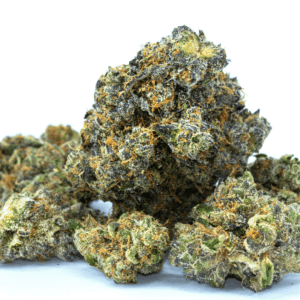
Anti-Anxiety and Stress Relief Effects
Stress sucks. Fortunately, linalool might make it a little more manageable. Several studies have suggested that linalool’s calming effects extend beyond the physical and into the psychological. It appears to reduce markers of anxiety in both animal models and early human studies.
Unlike harsh pharmaceuticals, linalool doesn’t knock you out—it gently calms you down. This makes it a great option for anyone dealing with social anxiety, generalized stress, or even just those days where the world feels a little too loud. Think of it as a botanical chill pill.
Linalool’s Anti-Inflammatory Benefits
In addition to its calming capabilities, linalool terpene effects have shown promise as an anti-inflammatory agent.
Inflammation plays a central role in a host of health issues, from arthritis to autoimmune disorders to chronic pain. Linalool appears to inhibit key inflammatory pathways in the body, including the production of cytokines and prostaglandins—both of which are involved in inflammation and pain response. This makes it an appealing option for those seeking natural ways to manage inflammation, especially when paired with anti-inflammatory cannabinoids like CBD.
Analgesic (Pain Relief) Potential
Speaking of relief—linalool’s pain-fighting reputation is also gaining ground. Thanks to its ability to reduce inflammation and modulate pain signals in the nervous system, it could act as a natural analgesic.
One study even found that linalool helped reduce pain sensitivity in mice, particularly when used in conjunction with other compounds. In the cannabis world, this means linalool-rich strains may offer layered pain relief—working through both the endocannabinoid system and other non-cannabinoid pathways.
Antimicrobial and Antifungal Properties
Linalool isn’t just a one-trick pony. In addition to its wellness perks, it also has antimicrobial and antifungal properties. This has led to its use in natural cleaning products, topical formulas, and even food preservation.
When applied topically, it may help prevent skin infections and soothe minor irritations. It’s not going to replace antibiotics anytime soon, but it adds another layer of usefulness that makes linalool even more intriguing as a therapeutic terpene.
Linalool for Mood Enhancement
It’s not just about reducing the bad—linalool also enhances the good. The terpene is often credited with having subtle mood-boosting effects. Whether it’s by reducing anxiety, encouraging a sense of well-being, or gently elevating your mindset, linalool can help shift your mood in a positive direction.
This is part of why linalool is so beloved in aromatherapy—it’s not just relaxing, it’s uplifting. For cannabis consumers, this can translate into a more balanced and enjoyable high, especially in strains designed for emotional wellness.
Linalool and Cognitive Function
Interestingly, linalool might also play a role in protecting and supporting brain health. Early studies have explored its neuroprotective potential, suggesting that linalool could help counteract cognitive decline or neural inflammation.
While we’re far from definitive answers, some researchers believe linalool could eventually be used in supportive therapies for conditions like Alzheimer’s or other neurodegenerative diseases. On a day-to-day level, users often report a sense of calm clarity when consuming linalool-rich cannabis—clear-headed but relaxed, sharp but not jittery.
Common Cannabis Strains High in Linalool
If you’re ready to dive into the world of linalool, a good place to start is with the right strain. While not as common as myrcene or limonene, several cannabis strains do contain notable levels of linalool. Some fan favorites include:
- Do-Si-Dos – An indica-dominant strain known for its relaxing, body-heavy effects and floral aroma.
- LA Confidential – Great for sleep and pain, with a subtle spice and sweet lavender profile.
- Amnesia Haze – A sativa-leaning strain with mood-boosting properties and a slightly citrus-lavender twist.
Because terpene profiles can vary depending on growing conditions, always check lab reports or ask your budtender if you’re looking for linalool-rich flower or concentrates.

How to Use Linalool-Rich Cannabis Products
There are several ways to experience the effects of linalool, depending on your preference. Smoking or vaping is the quickest method for feeling its effects, especially when paired with a strain high in both THC and linalool.
For a longer-lasting and more subtle experience, you might opt for an edible or tincture with a known terpene profile. Topicals can also work well for targeting inflammation or skin concerns—especially when combined with other soothing ingredients. Just keep in mind that high heat can degrade cannabis terpenes, so low-temp vaping is ideal for maximizing linalool’s benefits.
Final Thoughts: Is Linalool Right for You?
Linalool may not be the flashiest terpene on the menu, but its benefits speak for themselves. From calming nerves to supporting sleep, reducing inflammation, and even protecting brain function, linalool terpene effects pack a serious therapeutic punch.
Whether you’re exploring terpenes for the first time or you’re a seasoned consumer dialing in your experience, linalool terpene effects are worth adding to your radar. Next time you shop for cannabis, don’t just focus on THC or CBD—take a peek at the terpene profile. You might just discover that linalool is the missing link in your ideal cannabis experience.
Linalool Terpene Effects: Frequently Asked Questions
1. What does terpene linalool do?
Linalool is a naturally occurring terpene known for its calming, anti-anxiety, and sedative properties. It works by interacting with neurotransmitters like GABA and serotonin in the brain, helping to reduce stress and promote relaxation. It also offers anti-inflammatory, antimicrobial, and analgesic effects, making it a versatile compound both in cannabis and beyond.
2. What are the benefits of linalool?
The benefits of linalool terpene effects are wide-ranging. It’s most commonly known for its ability to ease stress, promote sleep, and reduce anxiety. Additionally, linalool has been studied for its potential as an anti-inflammatory, pain reliever, antimicrobial, and even a neuroprotective agent. These therapeutic effects make it a popular terpene for people seeking natural therapeutic support.
3. What does linalool make you feel like?
Linalool terpene effects tend to create a sense of calm, relaxation, and gentle mood elevation. Unlike more stimulating and common cannabis terpenes, it leans toward a sedative effect, making you feel more grounded and at ease. Users often report a peaceful mindset, reduced muscle tension, and an easier time unwinding—perfect for winding down in the evening or decompressing after a stressful day.
4. Is linalool a sativa or indica?
Linalool itself is a terpene, not a cannabis strain, so it doesn’t fall under the categories of sativa or indica. However, it’s more commonly found in indica-dominant linalool strains or hybrids that are known for their relaxing, sedative effects. If you’re searching for a linalool-rich strain, you’re more likely to find it in indicas designed for stress relief, sleep, or physical relaxation.
5. What does linalool smell like?
Linalool has a soft, floral aroma that’s often compared to lavender—clean, slightly sweet, and a little herbal. It also carries faint citrusy and woody undertones, giving it a balanced, soothing scent that’s both refreshing and comforting. Because of its pleasant fragrance, linalool is widely used in perfumes, lotions, and aromatherapy oils. In cannabis, it helps mellow out the more pungent or skunky notes, adding a touch of floral smoothness to the overall terpene profile.





